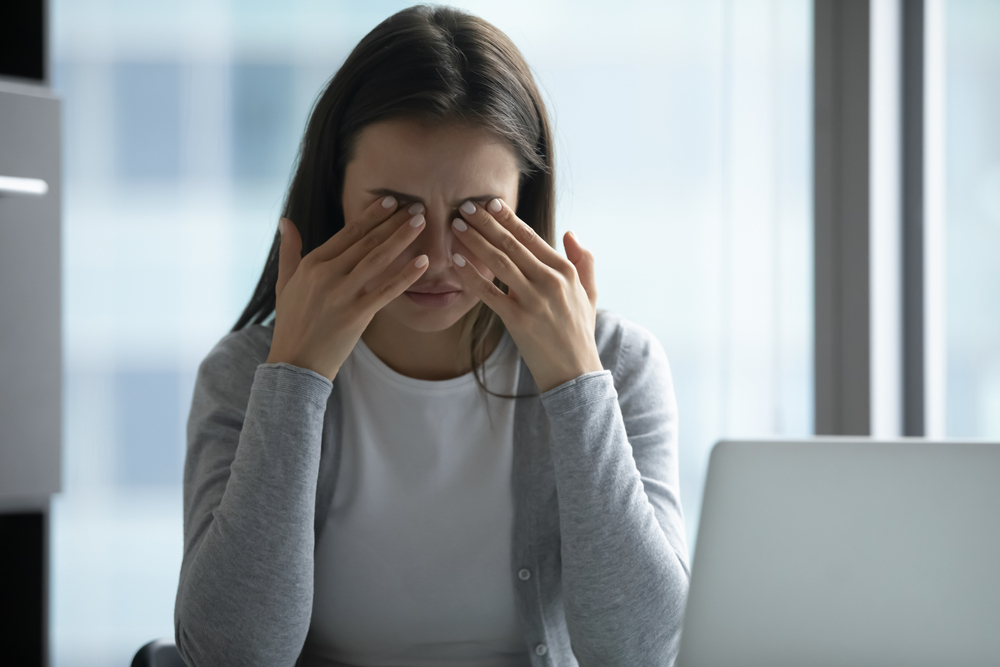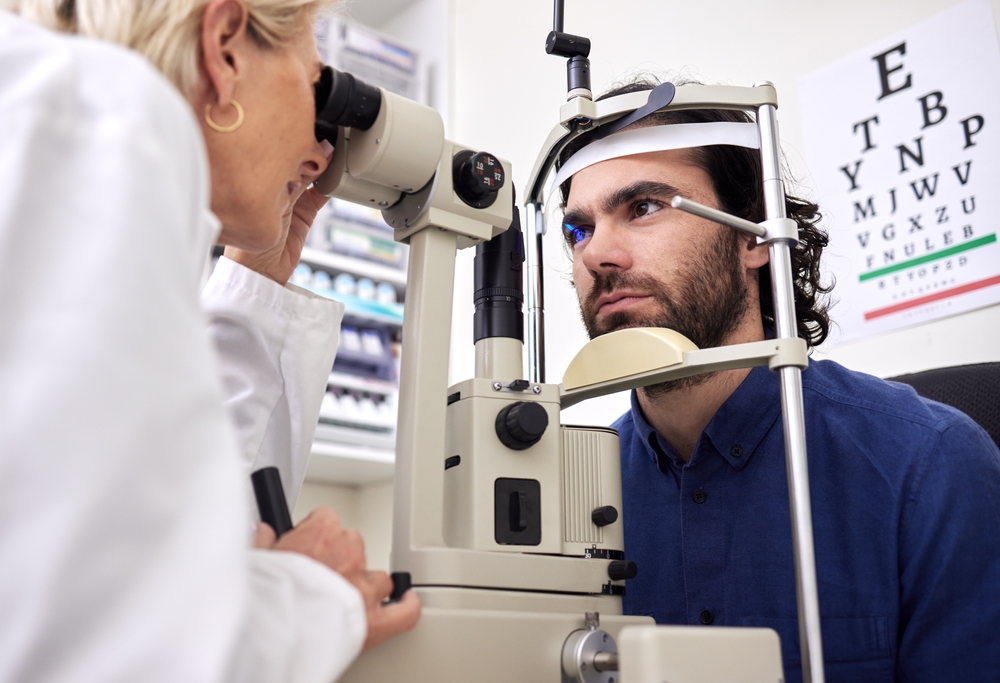Do you experience dry, itchy eyes? Do you depend on eye drops or artificial tears to get much-needed relief?
These are often symptoms of having dry eyes. You may also experience symptoms like burning, stinging, and grittiness if you have dry eyes.
You can get dry eyes if you don’t produce enough tears or the tears produced are low in quality. This can happen due to your environment and nutrition, but it can also be due to a chronic eye condition called dry eye syndrome.
Dry eye syndrome is a prevalent eye condition that primarily affects older adults, women (especially women undergoing hormonal changes due to pregnancy or menopause), and people with skin conditions like rosacea. If you frequently experience dry eyes, it could be due to dry eye syndrome.
Keep reading to learn about 6 tips to help you get your dry eye symptoms under control!
1. Stay Hydrated

One of the best things you can do to stay healthy is to drink plenty of water. Being dehydrated negatively impacts your health in many ways.
One significant impact is on how healthy your tears are. If your body isn’t getting enough water, it cannot produce tears properly.
Tears comprise three components: mucus, water, and lipids. When you don’t get enough water, your tears contain mostly mucus and oil, and don’t keep your eyes well moisturized or lubricated.
Staying hydrated is an excellent way to ensure that every part of your body gets enough water, including your tears! If you don’t like drinking water, you can still stay hydrated by drinking tea or having soup.
2. Get Plenty of Omega-3 Fatty Acids
Certain nutrients are vital to keep your eyes healthy. Some of the best nutrients for tear production are omega-3 fatty acids.
You can find omega-3 fatty acids in fish, walnuts, and various seeds, including chia seeds and flaxseeds. Omega-3 fatty acids are an essential nutrient that helps your body in many ways, so it’s good even if you don’t struggle with dry eyes.
However, if your eyes are dry, consuming more omega-3 fatty acids can help. Eating foods containing omega-3 fatty acids is the best way to ensure your body absorbs these nutrients.
If you have trouble eating enough of these foods, you can take supplements. Fish oil and flaxseed oil contain omega-3 fatty acids, which you can take as pills. Make sure you take these pills with food to help your body absorb the nutrients better.
3. Avoid Dry Environments

If you suffer from dry eyes, your environment may be partially to blame. Dry air may make your eyes feel too dry, especially in winter.
But dry air doesn’t always come from outside. Many homes and workplaces become too dry due to air conditioning or heating.
Whether there is hot or cold air blowing around you, these units can make your space quite dry. An easy way to counter dry air indoors is to use a humidifier.
Also, try not to sleep near heating or AC vents or sit near these for long periods. If you sleep with a fan, keep it far away, especially your face and eyes.
4. Beware of Screens
Blue light emitted from electronic screens can make your eyes feel dry or irritated, leading to feelings of eye strain. You may notice that your eyes feel tired after you’ve looked at a screen for a long time.
To reduce eye strain, dryness, and other harmful symptoms caused by blue light exposure, limit your screen time. When you do use a screen, consider using glasses that offer blue light protection.
You can also follow the 20-20-20 rule. The 20-20-20 rule helps keep your eyes from getting too dry while using screens. To follow it, take a 20-second break every 20 minutes to look at an object 20 feet away.
Make sure whatever you’re taking a break to look at is not a screen. Using the 20-20-20 rule will help give your eyes a much-needed break.
You can also use this time to blink. If your eyes feel dry, use eye drops or artificial tears to provide moisture.
5. Try Over-The-Counter Artificial Tears and Eye Drops
For immediate relief from dry eye symptoms, you can use over-the-counter eye drops or artificial tears. Artificial tears or eye drops can give your eyes the moisture they need.
These are not permanent fixes, as your eyes need to produce their own tears to stay healthy, but using eye drops and artificial tears can help. Using them can help provide moisture and lubrication immediately while experiencing irritation and dryness.
6. See Your Eye Doctor

If you try these tips without improvement, it’s time to see your ophthalmologist at St. Luke’s Cataract & Laser Institute. They can take samples of your tears to determine if you have dry eye syndrome.
If you have dry eyes, they can recommend treatment to help you find the relief you need. It’s imperative to treat your dry eyes.
If your eyes frequently feel dry and cause discomfort, it increases your chances of developing an infection and corneal ulcers. These can also damage your cornea and even cause permanent vision loss.
Addressing your dry eye symptoms early and seeing your eye doctor when the symptoms persist is necessary to keep your eyes healthy! There are several treatments for dry eye syndrome.
The simple lifestyle changes mentioned above are an excellent place to start, but many patients also require professional treatment. There are several prescriptions and non-invasive therapies that can treat inflammation and help your eyes produce tears better.
St. Luke’s offers many dry eye treatment options, including Prokera, BlephEx for patients with blepharitis, LipiFlow, and more. Which treatments we recommend will depend on the symptoms you’re experiencing and the severity of your dry eye. Learn more about the dry eye treatments available by requesting an appointment at St. Luke’s in Clearwater, FL, today!








